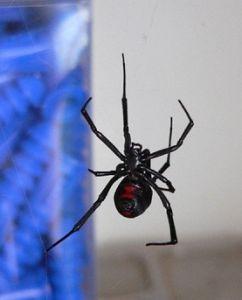How to Tell the Difference Between Necrotizing Fasciitis and Spider Bites
March 26, 2015
In the times that I have worked with amazing hospitals and doctors, I have learned and gathered information on the differences between two types of necrotizing infections that happen in the world of wound care. Necrotizing fasciitis (NF) and spider bites can present as similar in nature and need immediate intervention. NF will present as cellulitis and the inflammation will spread, whereas spider bites present with a red, white and blue sign. The patients will experience the following: fever, diarrhea, nausea, vomiting and pain. There are differences in the progression, treatment and use of antibiotics. In the following blog I will explain the differences and similarities of both conditions.
What is Necrotizing Fasciitis?
The CDC defines necrotizing fasciitis as a bacterial infection that spreads rapidly into the body’s soft tissues, destroying skin, subcutaneous fat and fascia. This is caused by more than one bacteria including group A Streptococcus, Klebsiella, Clostridium, E. coli, Staphylococcus aureus and Aeromonas hydrophila. The most common cause of NF is group A strep. Though this is a rare occurrence, NF can be caused by a break in the skin related to a cut, scrape, burn, insect bite or puncture wound. Many of the people who do get this bacterial infection have lower immune systems and decreased ability to fight the invasion of bacteria.
There are three different types of NF. Type 1 is a combination of both anaerobic bacteria and aerobic bacteria. Some of the bacteria to include Clostridium and Bacteroides species. Type 2 is group A Streptococcus with or without staphylococcal infection, and type 3 is Vibrio infection related to marine animals or insects. The infection spreads by inhibiting phagocytosis. These bacteria then utilize the immune system to spread through vessel walls. The conditions then allow the closing off the hypoxic conditions and the facultative aerobic organisms to grow and become anaerobic. The bacteria then start to breakdown surrounding cells and there is a release of carbon dioxide, water, hydrogen, nitrogen, hydrogen sulfide, and methane. As the toxins continue to spread throughout the bloodstream, the patient becomes septic.
The toxins are noted to follow fascia, muscle compartments, or both. The most common areas of infection are the abdominal wall, perineum, and extremities. When attacking the perineum and scrotum it is better known as Fournier gangrene. The most common causes are trauma, surgery, and insect bites. Comorbidities such as diabetes, chronic renal failure, immunosuppressive therapy, hypertension, obesity and malnutrition increase susceptibility. Patients often appear with symptoms of septicemia and generalized pain. The patient will often go into multi-organ system failure.
An emergency NF situation needs immediate IV antibiotics and multiple surgical debridement. The use of hyperbaric oxygen therapy (HBOT) can reduce the movement of the toxins into the fascia, muscle compartments and bloodstream. HBOT is effective in creating an oxygen filled environment that can stop the progression of the anaerobic bacteria. The use of dressings should be conservative until the bacteria is under control and then there should be reassessment of the wound for proper dressing.
Identifying Spider Bites
There are more than 3,500 spider species in the United States. Though not found in every state, the two types of spiders that can cause the most damage of all of the types are Black Widows and Brown Recluse.
The Brown Recluse: The brown recluse (Loxosceles reclusa) has a violin shape on its back. The bite can go unnoticed as it is painless. After a few hours, symptoms of pain, fever, malaise, headache, dark urine, and arthralgia may begin. The wound site will have burning sensation or some type of irritation.
There will be severe pain, blistering with blue in the center, ringed by redness. There will be pimple-like lesions with yellow or green pus, or a rash that itches or ulceration with break in the skin or mucous membrane. You could have some of these symptoms or none of them, depending on the individual reaction to the bites. The person who has the spider bite should go to the emergency room immediately. Medical treatment could include antibiotics, ice and elevation of the wound, antivenom, steroids, and antihistamines. If the wound becomes necrotic, then surgery will need to be done to clean out the wound bed. The wound dressing used will depend on the condition of the wound and the ability of the person to heal.
The Black Widow: The black widow (genus Latrodectus) is recognized by the bright red hourglass marking on the abdomen. The populations of greatest concern with regard to the bite from a black widow are the elderly, children and people with many comorbidities. The venom does have poison, but it is not necrotizing. Systemic reactions occur including headaches and abdominal pain.
These symptoms will go away in 1 to 3 days. Treatments for a black widow bite includes ice, calcium gluconate and antivenom. Patient Case Example: A patient was admitted to a facility for follow up wound care after hospitalization. The history and physical stated that the patient had been bitten by a spider and the patient reported that it had happened while she was sleeping. The doctor diagnosis for admission was necrotizing fasciitis. The wound was debrided several times during the admission. The tissue showed good granulation and undermining. The importance of the patient case should not have been placed on antibiotic therapy and repeated debridement, but on the closing of the wound.
Conclusion
It is important to assess the patient especially in the emergency room and/or admission to the hospital. The difference between necrotizing fasciitis and spider bites is the difference in how the wound will be treated from the beginning throughout the course of treatment in the hospital. The prompt assessment of NF is necessary, as any loss of time could endanger the patient’s life as well as increase the damage to the underlying tissues.
About the Author
Lydia Meyers RN, MSN, CWCN has been a certified wound care nurse for over 15 years with experience working in home healthcare, extended care facilities, hospice care, acute care, LTAC, and wound clinics. Her nursing philosophy to "heal wounds as quickly as possible" is the guiding force behind her educational pursuits, both as a teacher and a student.
The views and opinions expressed in this content are solely those of the contributor, and do not represent the views of WoundSource, HMP Global, its affiliates, or subsidiary companies.










